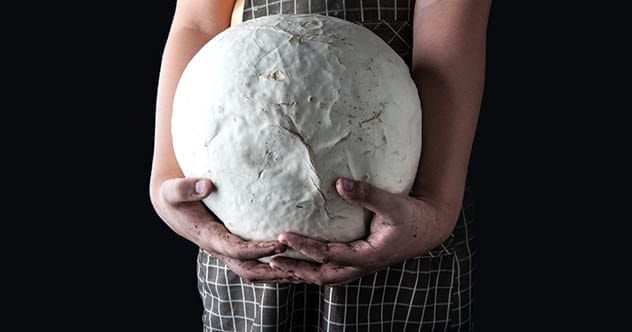Mushrooms and fungi are familiar to most. We know them for culinary, medicinal uses, annoying mold, or baking yeast. But some fungi go beyond the ordinary, venturing into the realms of fantasy. Prepare to be amazed by these horrifying, interesting, and weird species.
Lobster Mushroom
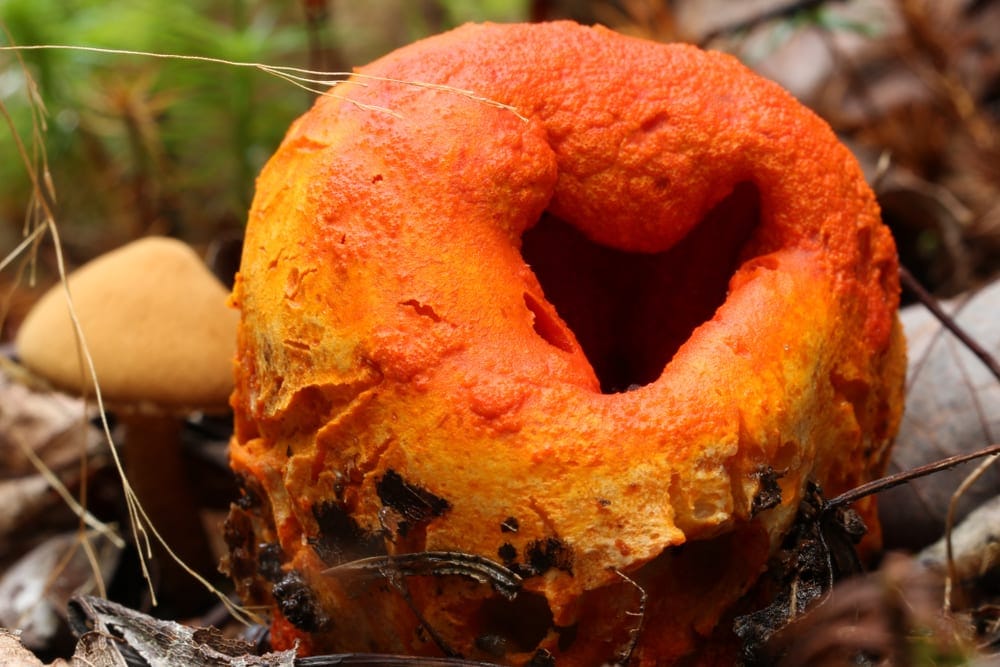
Despite its name, the lobster mushroom isn’t entirely a mushroom. Hypomyces lactifluorum is a bright orange, parasitic mold. It spreads over its white host, typically Russula or Lactarius mushrooms, transforming it into something akin to a lobster.
This transformation produces a combination considered extremely delicious. The mold part might not sound appealing, but this parasitically transformed orange mushroom smells like shellfish. In the case of Lactarius, it turns a hot, peppery mushroom into something mild and delicious. It’s one of the coolest things one could eat.
Be cautious though. While Russula or Lactarius mushrooms are edible, Hypomyces lactifluorum could target a poisonous mushroom. While such accidents are rare, always have wild mushrooms identified by a professional before eating.
Giant Puffball
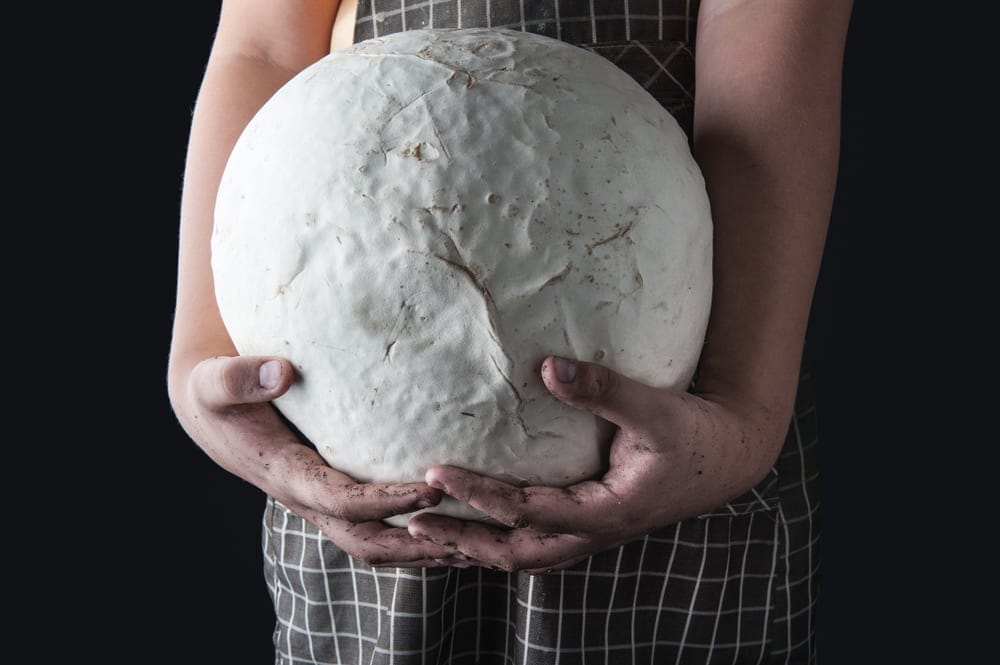
The giant puffball mushroom might surprise some due to its commonality in mainland Europe. These mushrooms are quite massive, smooth, and pure white, truly befitting the title of ‘puffball.’
They can grow to be over a meter in diameter and may “explode” to spread their powdery spores. Despite their strange description, they’re edible and popular to forage. Many consider them safe, as few other mushrooms resemble a large, white, spherical thing.
If you crave these otherworldly mushrooms, ensure the inside is pure white. Once it’s yellow or brown, the spores have ripened, and the mushroom becomes inedible.
Mycena Chlorophos
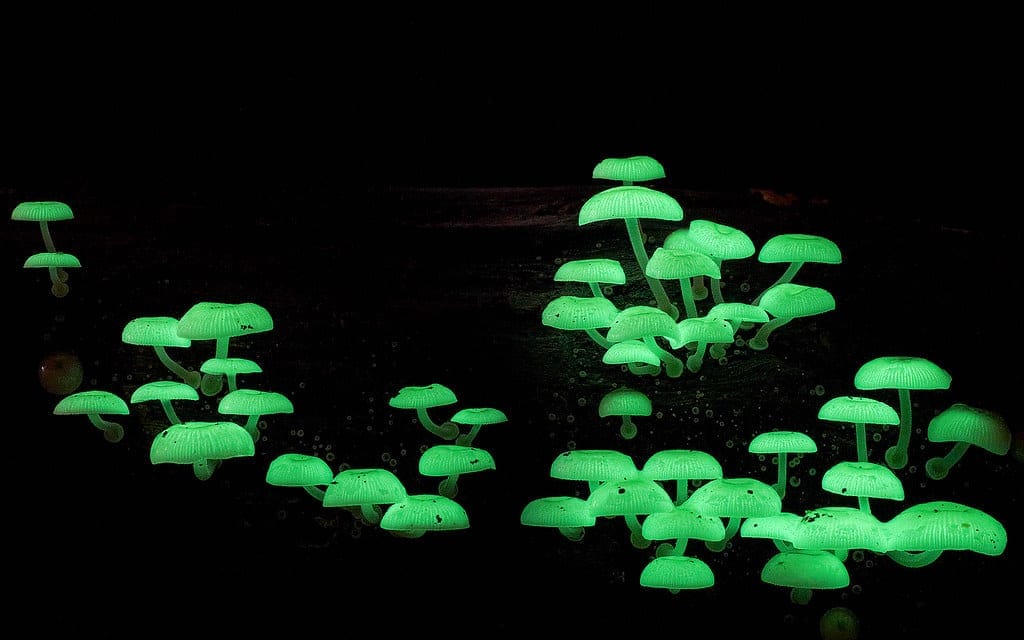
This mushroom might look conventional at first, but it is truly beautiful and interesting. Mycena chlorophos is a naturally luminescent mushroom. Growing in groups, it emits a clear green glow in the dark, a wonderful sight to behold.
This species remains mysterious and unknown, largely due to its limited range. It’s mainly found in subtropical Asia, with tiny portions in Brazil and Australia where it was likely introduced.
Its edibility is unknown, and it’s best not to get your hopes up, as the mushroom is said to smell of ammonia. Typically found within woody debris, it displays its beauty for about 72 hours after developing, a sight to capture!
Indigo Milk Cap
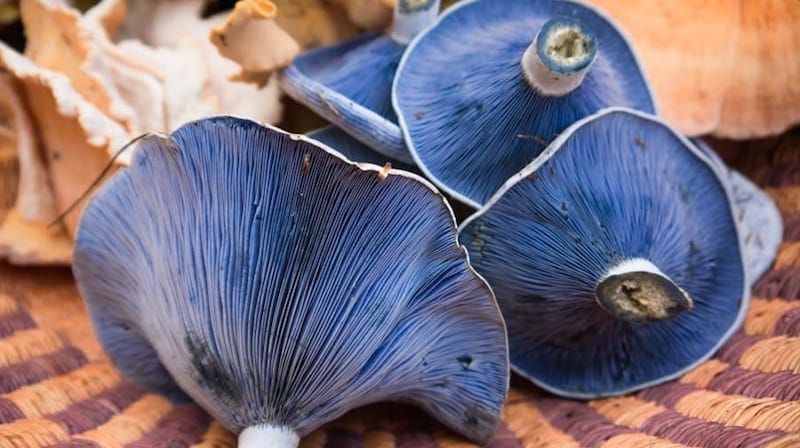
Lactarius indigo, or the indigo milk cap, is a beautiful mushroom with a striking blue color. Its cap measures up to 15 cm wide. It’s frequently praised for its unique beauty and odd features, sought after by edible mushroom enthusiasts as an enticing oddity.
Its common name is apt because when you cut the flesh or damage the gills, this mushroom exudes a colorful, blue, milky, latex-like liquid, different from the white ‘milk’ of its closest relatives.
The indigo milk cap is also mycorrhizal, like chanterelle mushrooms. Growing close to trees, they exchange minerals and nutrients in a mutually beneficial relationship.
Edible, it’s generally described as plain-tasting or even bitter. It’s not extremely delicious, but worth trying if you want to experience eating a blue milky fungus.
Bearded Tooth Mushroom
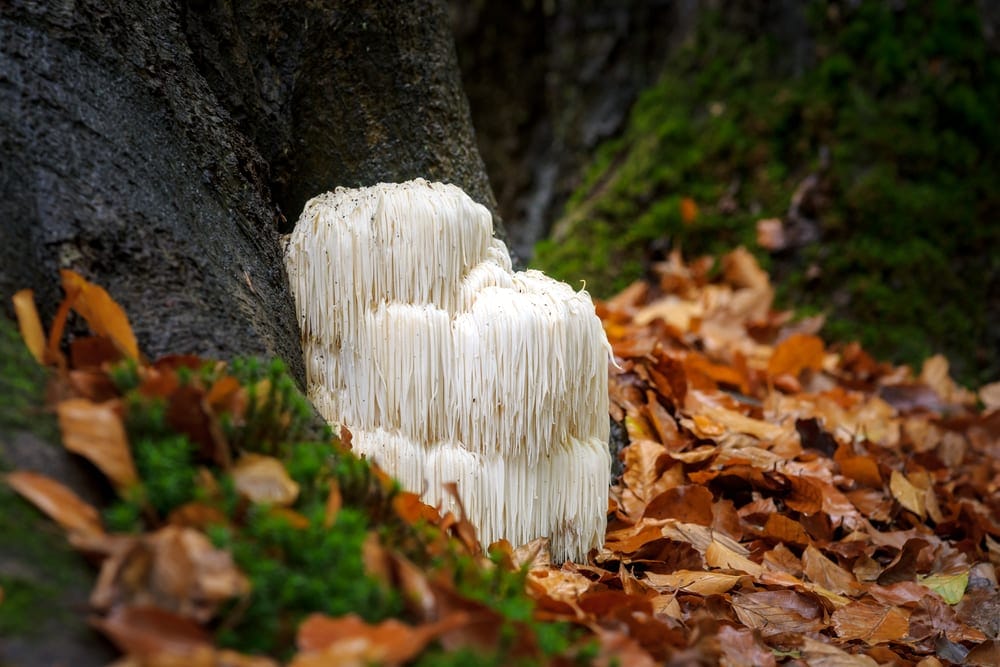
Hericium erinaceus, also known as the lion’s mane mushroom or the bearded tooth mushroom, is a medicinal and edible forest mushroom. Found in North America, Europe, and Asia, its looks rival fictional plants.
Growing on trees, it appears as large, cool-looking lumps, a cascade of spines likened to icicles due to their long, sharp, downwards-growing shape and white coloration. With age, it turns yellow or brown. Like its name suggests, it looks like a beard or an animal’s mane.
Besides being edible and consumed in China and Japan, it has medicinal usages dating back to traditional Chinese medicine. Modern research shows it contains compounds effective against memory loss, anxiety, depression, dementia, neurological disorders, and cancer!
A beard- or mane-looking, large, spiny mushroom that grows on trees and is flavorful and medicinal sounds like something straight out of a fantasy story.
Shaggy Ink Cap
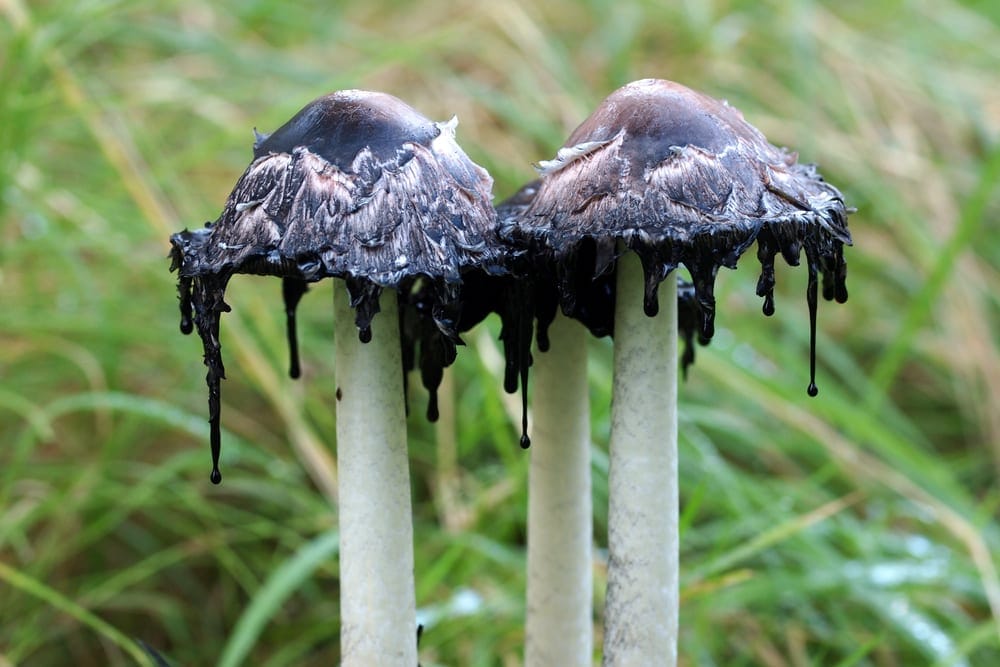
We’ve covered many intriguing and strange mushrooms, but this one is special! Coprinus comatus, or the shaggy ink cap, has incredible names and is quite incredible by itself. It’s a reasonably common, small, egg-shaped mushroom, naturally white, frequently found in woods, meadows, fields, and even suddenly appearing on lawns!
These fungi have the habit of suddenly appearing in troops, lines, or various formations. Starting off white, the gills deliquesce, meaning they slowly decompose and liquidify into black ink, creating a gradient and slowly turning black, which is also the color of its spores.
Though not the rarest, it’s certainly an incredibly interesting sight to see!
Black Brain Fungus
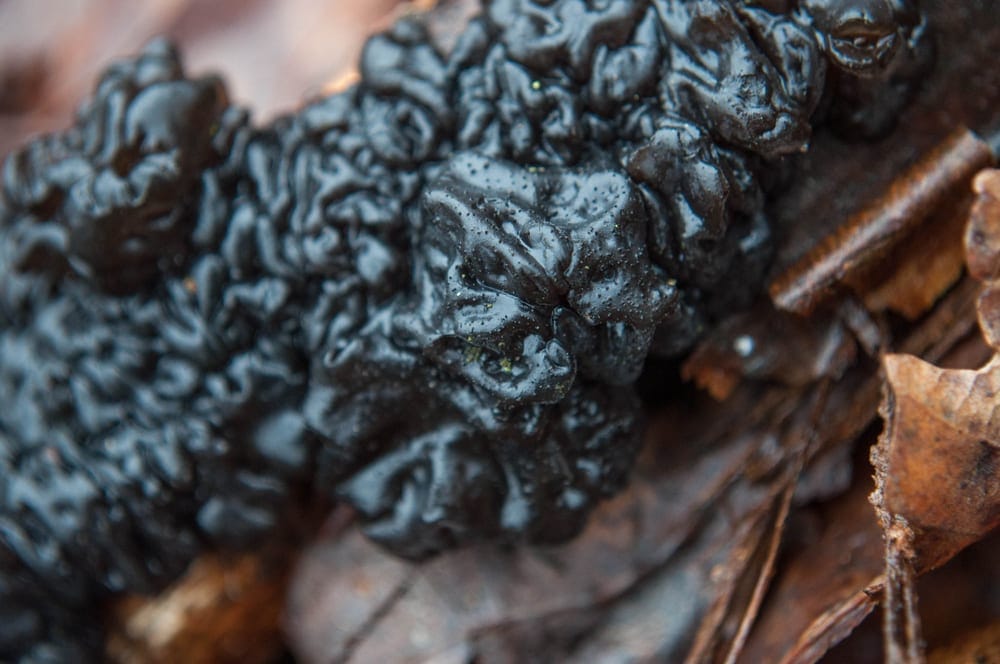
Exidia glandulosa, also known as black brain fungus or black witches’ butter fungus, matches that description with its amazing black coloration in wet weather and greasy, butter-like, almost tar-like appearance.
Found throughout Europe and North America in the winter and autumn, it’s often received divisively. Some describe its looks as beautiful and intriguing, while others find it downright gross. But either way, it’s hard to deny its uniqueness!
Frequently found on dead wood and fallen branches, it’s described as squishy or gelatinous in texture. Its edibility is classified as dubious, and it likely has no nutritional value. It’s probably best to opt for real butter.
The Devil’s Cigar
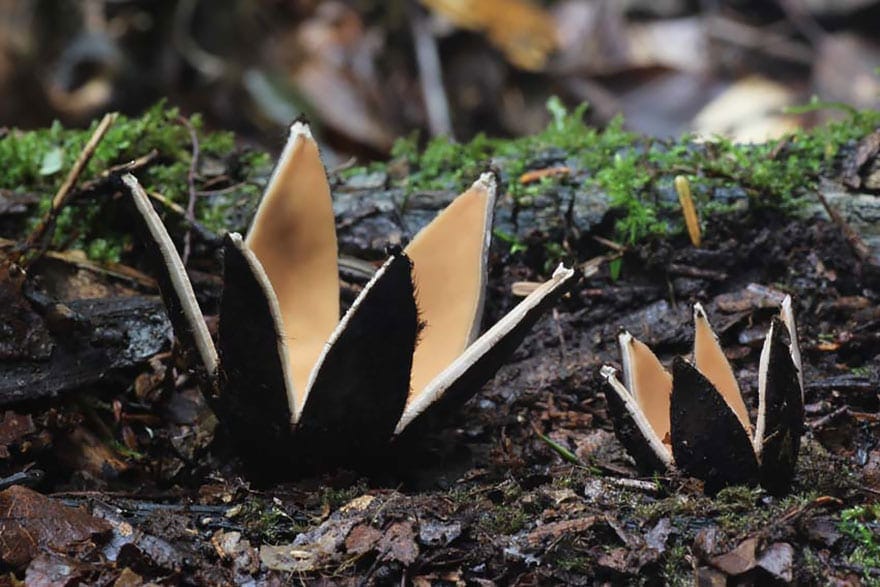
Chorioactis, known as the devil’s cigar or Texas star, is a pretty and extremely rare genus of fungi containing only one species: Chorioactis geaster.It’s shaped like a star.
This mushroom is known for its looks and extremely strange distribution. Sometimes cited as one of the rarest mushrooms, it’s found only in a few Texas counties and locations in Japan; its placement seems random!
This mushroom looks like an American football or a cigar early in its life before it splits apart, releasing its massive, cigar-shaped spores with an audible hiss and sprouting into a flower-like fungus with three to six rays or ‘petals’.
Chicken of the Woods
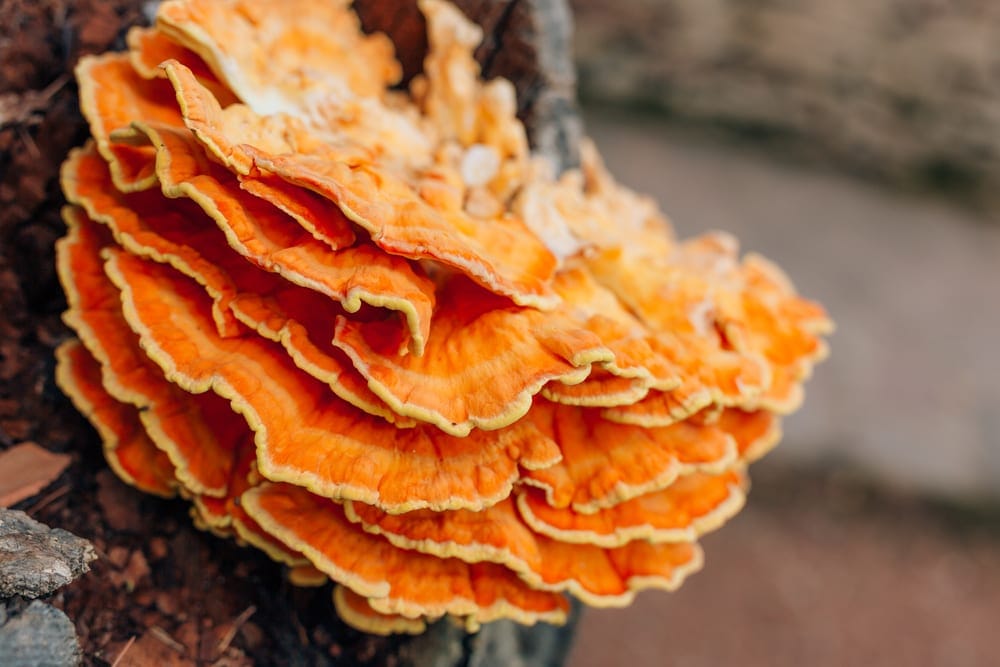
Laetiporus sulphureus, the chicken of the woods, is a large, yellow- or orange-colored edible polypore mushroom that grows on trees, having interesting quirks besides its appearance.
Most notably, the chicken of the woods tastes like chicken!
It’s common to joke that something tastes like chicken. However, in this case, it’s true! This mushroom is high in protein and a vegetarian alternative to chicken!
Frequently consumed fried in breadcrumbs, it’s said to be best when picked young and moist and keeps well frozen.
A downside is that some people experience nausea or side effects after eating it, and it’s important to ensure it hasn’t absorbed toxic substances from the tree it grew on. If those factors are considered, this mushroom could be a tasty thing to look for!
Bleeding Tooth Fungus
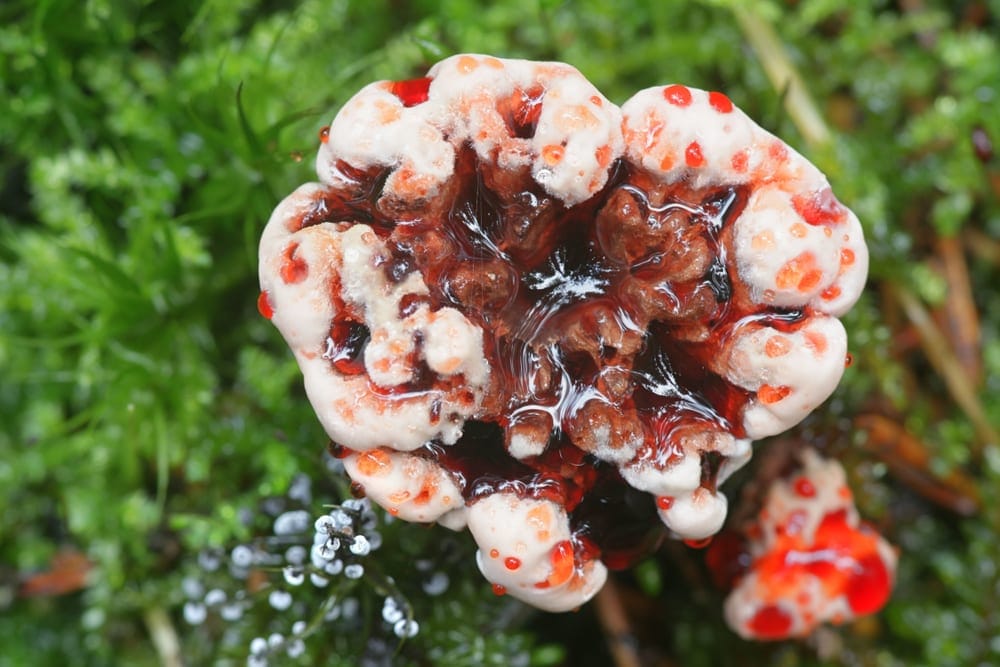
We’ve reached the final fungus, Hydnellum peckii, or the bleeding tooth fungus. The devil’s tooth looks unbelievable!
The adult form isn’t special, but when young, it’s an entirely different story!
The off-white, beige, or pink coloration is dotted with many ‘pores’ oozing a vivid, red or dark red liquid, reminiscent of blood.
This liquid, a type of sap, makes it look like the fungus is bleeding from multiple holes thanks to a red pigment. This fungus isn’t all scary; thelephoric acid, a chemical found in it, is seeing experimentation as a treatment for Alzheimer’s disease!
While it’s not toxic, it’s said to be extremely bitter and inedible.
At the end of the day, it may not be tasty, but it would surely make an eye-catching cover for a fantasy novel!
Which of these fantastical fungi surprised you the most? Leave your comment below!


